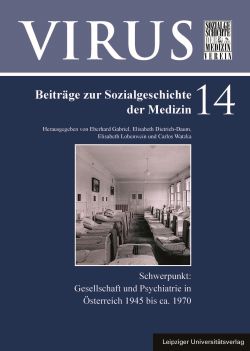
VIRUS Band 14, pp. 191-206, 2020/07/23
Schwerpunkt: Gesellschaft und Psychiatrie in Österreich 1945 bis ca. 1970

Freudian Psychoanalysis and Adlerian Individual Psychology were the therapeutic methods in Austria before World War II. In March 1938 the antisemitic Nazi regime closed these institutions and prosecuted their members. After 1945 in the newly founded Viennese psychoanalytic society the training of candidates was taken up again. Some candidates were simultaneously working as psychiatrists at the university hospital. From 1947–1970, the medical faculty at Vienna University offered just a few lectures on medical psychology and two on psychotherapy. During the post graduate psychiatric training one single seminar on psychotherapy was offered. These circumstances signified a certain resistance against psychotherapy in academic, especially medical circles. Diverse reasons for the resistance against psycho-therapy as an academically accepted treatment method can be identified: confessional obstacles, disqualifying psychotherapy as a non-scientifically proved method, the overenthusiastic welcoming of psychopharmaceutic drugs leading to the dominance of biological psychiatry, and last but not least the specific conditions of psychotherapeutic training contributed to the impediment of implementing psychotherapy in academic settings. Psychotherapy promoting factors, among others, included the students’ movement in the 1960s that raised public awareness for the psychosocial origins of psychopathological conditions. With the law on psychotherapy, issued in 1990, the profession of “psychotherapist” was created. Current examples of cooperation between psychotherapeutic societies and universities are listed. Finally, possible advantages and pitfalls of different models aiming at integrating psychotherapy as an “academic” profession are discussed.
Keywords: Psychotherapy, Psychiatry, Psychoanalysis, Vienna Medical School